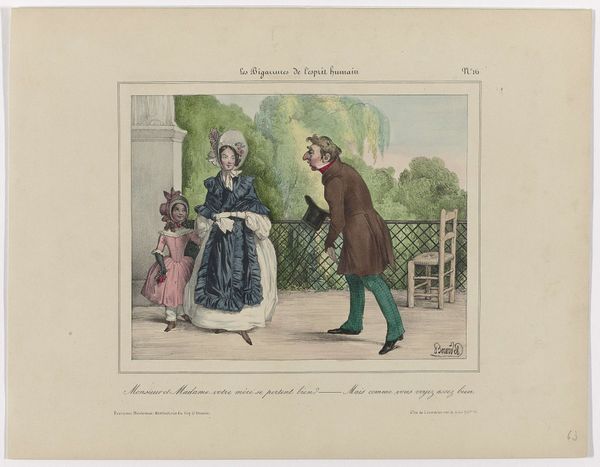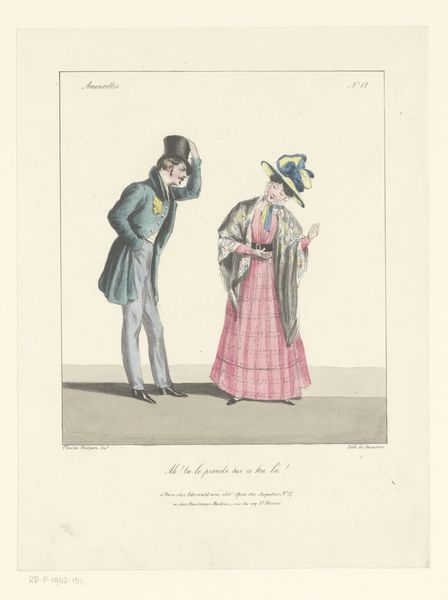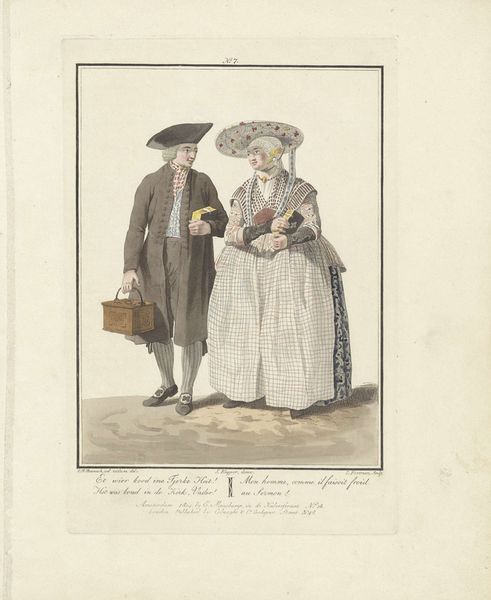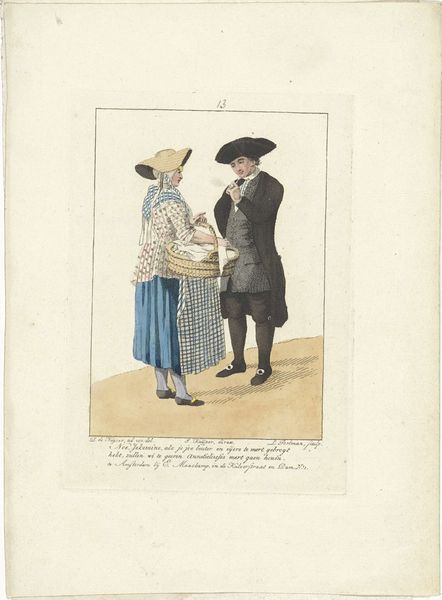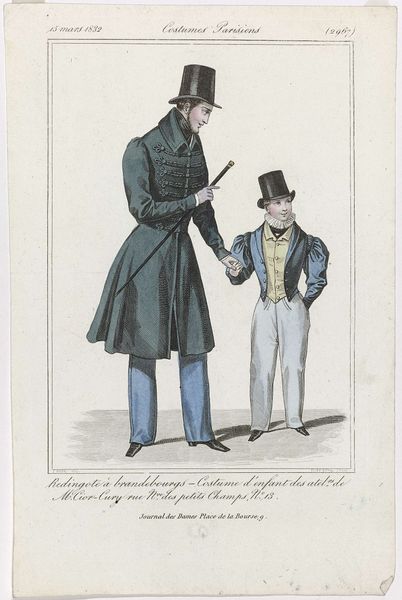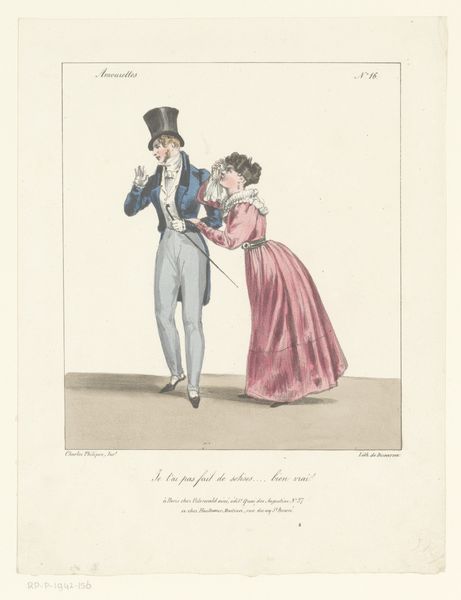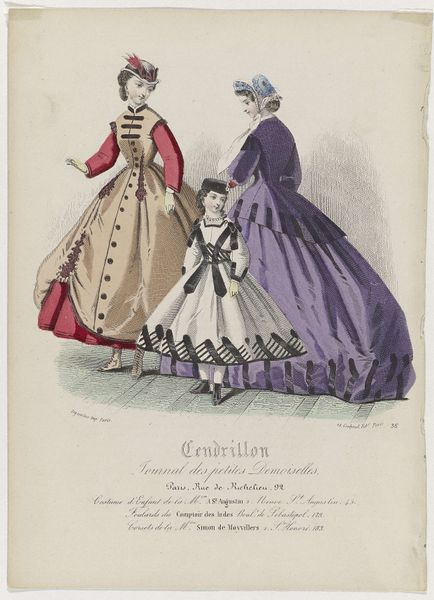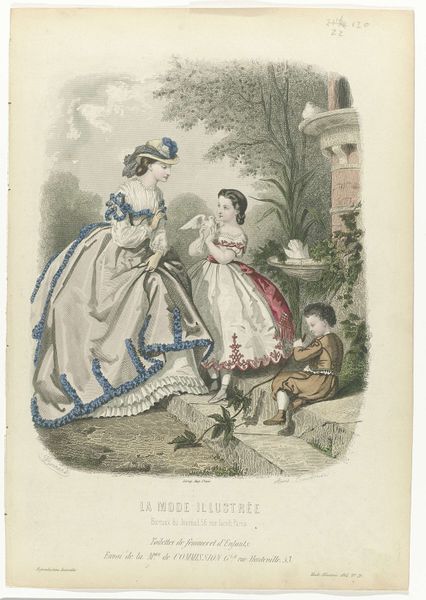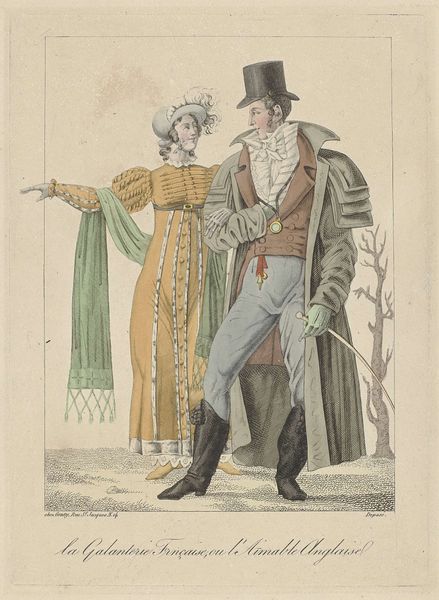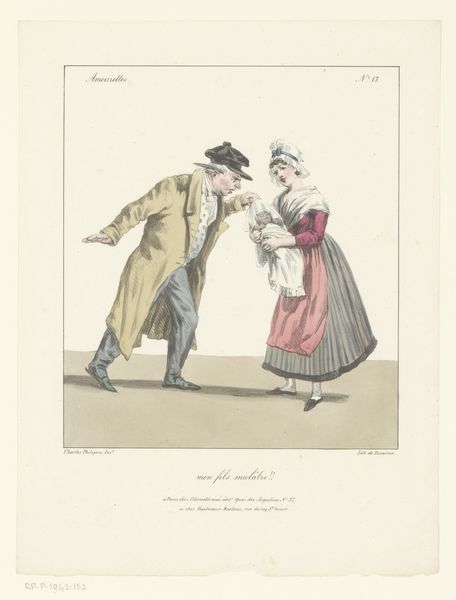
Dimensions: height 267 mm, width 200 mm
Copyright: Rijks Museum: Open Domain
Curator: This watercolour illustration, entitled “La Toilette de Paris, 1865, No. 236 : Toilettes de Mme Pieffort (…)", painted in 1865, showcases the fashion of the time with a certain grace and attention to detail. Editor: My immediate impression is one of formality tinged with childhood innocence; the palette is muted, almost melancholic, save for the little girl's red cape which lends an unsettling feeling. It also speaks to an era where gendered expectations were deeply ingrained. Curator: Indeed, these types of prints, often found in journals like *Le Journal des Dames*, were instrumental in shaping the fashion industry and promoting the ideals of bourgeois femininity in 19th-century Parisian society. The mother and child, seemingly strolling through a park, represent that ideal—a well-dressed family projecting an image of success and respectability. It all points towards women as instruments of consumerism, social position. Editor: And that is a perspective that remains valid. It reminds me of Foucault’s concept of power – not merely restrictive, but productive, subtly guiding behavior. The very act of carefully studying and replicating these fashions was itself a form of self-discipline. We should not overlook it; clothing as a form of societal structure, as societal jail almost. Who profits, after all? Who owns the *gaze*? Curator: Certainly. I'd add that Romanticism plays a significant role. Look at how the natural backdrop, although faded, still evokes feelings of wistful beauty, enhancing the sentimental nature of the image. It's not just about fashion, it's also about cultivating a particular emotional response connected with nature, or artifice of nature, and femininity. Editor: A fascinating point. And when seen from this perspective, this piece starts talking about motherhood, or the social pressures, not only about wealth, but, more important, the pressures of a specific class about its daughters. In addition to that, what type of labor relationships were built within the world this artwork depicts? Curator: This artwork encapsulates several layers. By observing it through a fashion history perspective, or using feminist and sociological critical frameworks, we see the rich and complex nature of visual documents like these, as active participants within their sociohistorical environments. Editor: It's an intricate layering, exactly. This small work becomes a point for future analyses about fashion, body image, power and more—opening numerous possibilities for engaging contemporary social concerns.
Comments
No comments
Be the first to comment and join the conversation on the ultimate creative platform.

